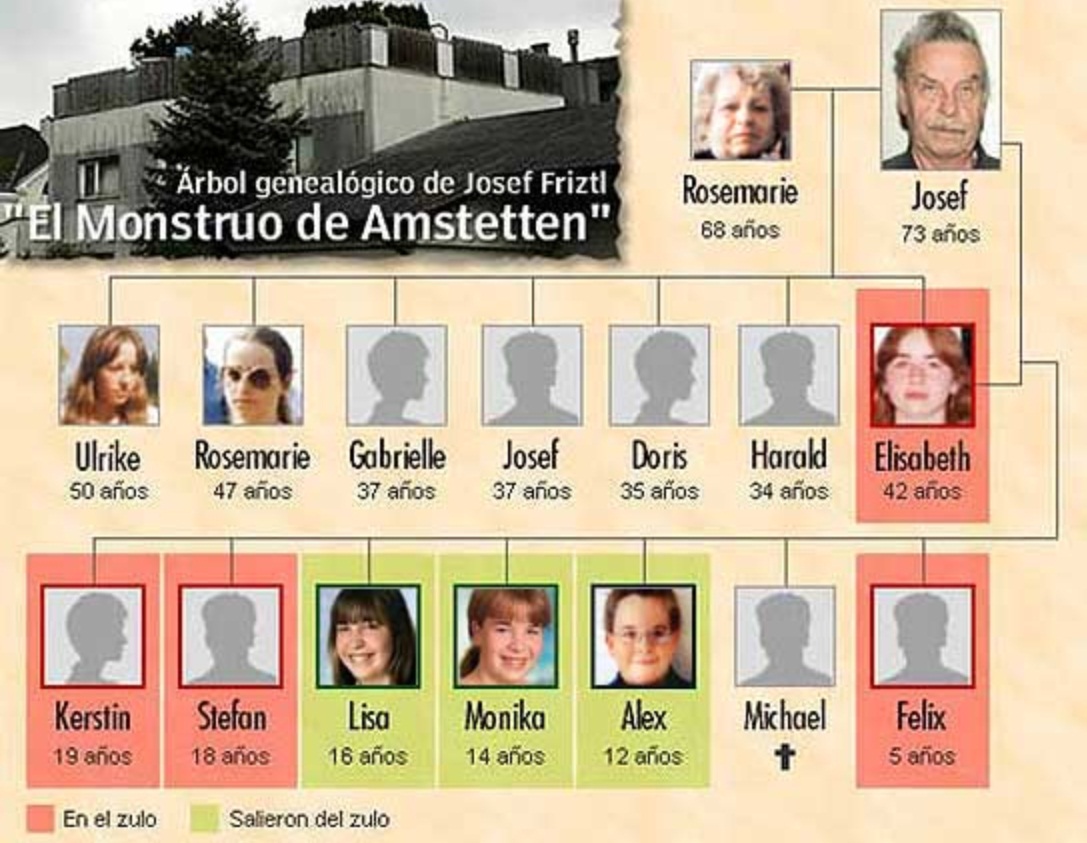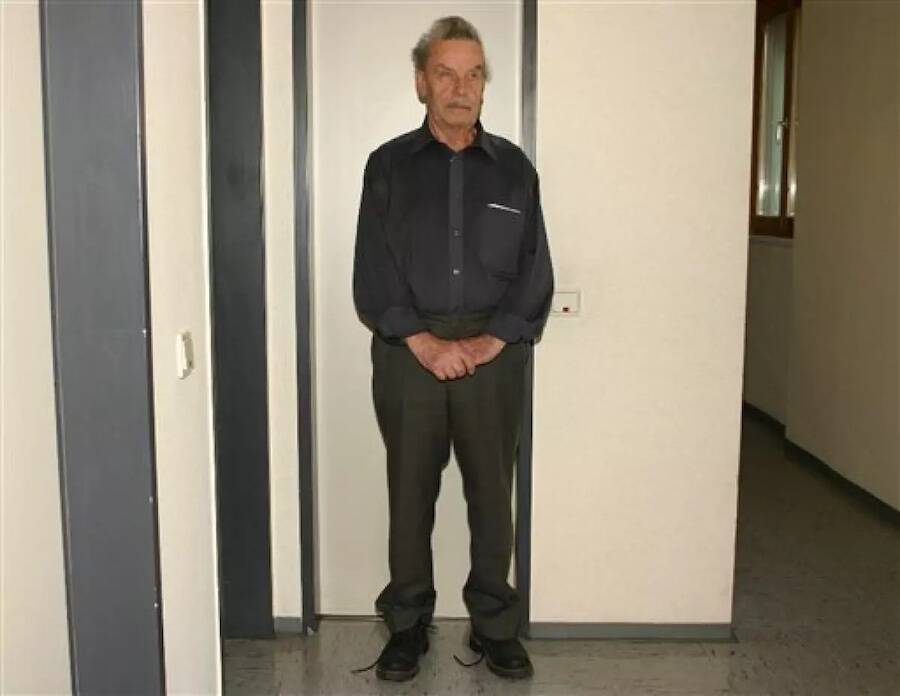Unveiling The Dark Story Of Josef Fritzl: A Tale Of Horror And Resilience
When we talk about Josef Fritzl, it’s not just a name—it’s a chilling reminder of the darkest corners of humanity. This case shocked the world and left an indelible mark on history. Fritzl’s crimes were so heinous that they continue to be studied by psychologists, criminologists, and legal experts worldwide. His story is one of abuse, captivity, and survival against all odds.
Imagine living in a world where trust is shattered and the people we love the most turn out to be our worst nightmares. That’s the reality that unfolded when Josef Fritzl’s hidden dungeon came to light. It’s a story that will haunt humanity for generations, but it’s also a testament to the resilience of the human spirit.
Today, we delve into the life, crimes, and aftermath of Josef Fritzl’s horrifying actions. This article aims to provide insight into his background, the impact of his crimes, and the lessons learned from this harrowing tale. Buckle up, because this isn’t just a story—it’s a cautionary tale for all of us.
Read also:Amber Lynn Bach The Rising Star Of Creative Brilliance
Table of Contents
- Biography: The Man Behind the Headlines
- Early Life and Background
- The Dungeon: A Place of Horror
- The Victims: Their Stories and Survival
- Psychological Analysis of Fritzl
- Legal Ramifications: Justice Served?
- Media Coverage: Sensationalism or Necessary Awareness?
- Lessons Learned: What Can We Do?
- Aftermath: The Families and Society
- Conclusion: Remembering the Victims
Biography: The Man Behind the Headlines
Basic Information
Let’s start with the basics. Josef Fritzl, born on April 12, 1939, in Amstetten, Austria, was a man who lived an ordinary life on the surface. But beneath that façade lay a monster waiting to be exposed. Below is a quick overview of his personal details:
| Name | Josef Fritzl |
|---|---|
| Date of Birth | April 12, 1939 |
| Place of Birth | Amstetten, Austria |
| Occupation | Electrical Engineer |
| Famous For | Imprisoning his daughter and fathering seven children with her |
Now, let’s dive deeper into his life and uncover the layers of this disturbing case.
Early Life and Background
Josef Fritzl grew up in a small town in Austria, leading what appeared to be a normal life. He worked as an electrical engineer and married Rosemarie Fritzl in 1960. Together, they had three children: Kerstin, Fritzl’s eldest daughter, and two sons. On the outside, Fritzl seemed like any other family man, but his dark secrets were lurking just beneath the surface.
What many didn’t know was that Fritzl had a troubled past. He had been convicted of theft in his youth and even served time in prison. These early brushes with the law hinted at a man who didn’t respect boundaries, but no one could have predicted the horrors he would later unleash.
The Dungeon: A Place of Horror
Fast forward to 1984, when Fritzl’s monstrous plan came to fruition. He built a secret dungeon beneath his home, a place where he would imprison his own daughter, Elisabeth, for 24 years. This dungeon was equipped with everything he needed to sustain his sickening lifestyle—beds, kitchens, and even a television. But it was far from a home; it was a prison.
Elisabeth was drugged and kidnapped by her own father when she was just 18 years old. For over two decades, she lived in isolation, subjected to unimaginable abuse. Fritzl fathered seven children with her, all of whom were raised in the dungeon. It’s a story that defies comprehension, yet it’s undeniably true.
Read also:Ellen Pompeo And Patrick Dempsey A Timeless Friendship Beyond Greyrsquos Anatomy
What Made Him Do It?
Many have asked why Fritzl would do such a thing. Was it a result of mental illness, or was it pure evil? Psychologists have debated this question for years, but one thing is clear: Fritzl’s actions were deliberate and calculated. He wasn’t just a man acting on impulse; he was a predator who planned every move with precision.
The Victims: Their Stories and Survival
Elisabeth Fritzl’s story is one of survival against all odds. Despite the horrors she endured, she managed to protect her children and even teach them basic skills. When the world finally discovered her plight in 2008, it was her youngest child, Kerstin, who played a pivotal role in exposing Fritzl’s crimes.
Kerstin became ill and required medical attention, which forced Elisabeth to send a message to the outside world. Her bravery led to the unraveling of Fritzl’s carefully constructed lie, and the world was left reeling at the magnitude of his crimes.
- Elisabeth Fritzl: Imprisoned for 24 years
- Seven children: Born and raised in the dungeon
- Kerstin: The key to exposing the truth
Psychological Analysis of Fritzl
So, what makes a man like Josef Fritzl tick? Experts have studied his case extensively, and while there’s no definitive answer, some patterns emerge. Fritzl exhibited signs of narcissistic personality disorder, a condition characterized by a lack of empathy and an inflated sense of self-importance.
Additionally, his history of criminal behavior suggests a disregard for societal norms and laws. But perhaps the most chilling aspect of Fritzl’s psychology is his ability to compartmentalize his life. On the surface, he was a loving father and husband, but in reality, he was a monster hiding in plain sight.
Can We Understand Evil?
Understanding evil is a complex task, and Fritzl’s case highlights the difficulties of doing so. While we may never fully comprehend his motivations, studying his behavior can help us better understand the warning signs of such crimes and prevent them in the future.
Legal Ramifications: Justice Served?
When Fritzl’s crimes were exposed, the world demanded justice. In 2009, he was sentenced to life in prison without the possibility of parole. Additionally, he was ordered to pay millions in compensation to his victims. But was this enough?
Some argue that no punishment could ever make up for the pain and suffering inflicted on Elisabeth and her children. Others believe that Fritzl’s imprisonment is a small victory in the fight against such heinous crimes. Regardless of one’s perspective, the legal system did its part in holding Fritzl accountable for his actions.
Can Justice Ever Be Truly Served?
Justice in cases like these is a complex issue. While Fritzl’s sentence may satisfy the legal requirements, it can never fully repair the damage done to his victims. The psychological scars will remain, and the trust that was broken may never be rebuilt.
Media Coverage: Sensationalism or Necessary Awareness?
The media played a significant role in bringing Fritzl’s crimes to light. Headlines around the world screamed of the horrors committed in that Austrian basement, and the public was both horrified and fascinated. But was all this coverage necessary?
While some argue that the media’s role was crucial in raising awareness, others criticize the sensationalism that surrounded the case. The line between informing the public and exploiting tragedy is a fine one, and many believe that the media crossed it in their coverage of Fritzl’s crimes.
Is Sensationalism Justified?
This question remains a topic of debate. On one hand, the media has a responsibility to inform the public about important issues. On the other hand, sensationalism can lead to a culture of exploitation, where tragedy becomes a commodity. It’s a balance that the media must strive to achieve.
Lessons Learned: What Can We Do?
So, what can we learn from Josef Fritzl’s case? The first lesson is the importance of vigilance. Many of Fritzl’s neighbors and acquaintances had no idea what was happening right under their noses. This case serves as a reminder that we must remain aware of the signs of abuse and report them when we see them.
Another lesson is the need for better support systems for victims. Elisabeth and her children faced an uphill battle in reintegrating into society after their ordeal. Providing them with the resources they need to heal and rebuild their lives is crucial in cases like these.
How Can We Make a Difference?
There are many ways we can make a difference. Supporting organizations that help victims of abuse, advocating for stricter laws, and educating ourselves and others about the signs of abuse are just a few steps we can take. Together, we can create a safer world for everyone.
Aftermath: The Families and Society
The aftermath of Fritzl’s crimes continues to ripple through society. Elisabeth and her children have faced numerous challenges in adjusting to life outside the dungeon. Society, too, has been forced to confront the uncomfortable reality of what happened in that Austrian town.
But there’s also hope. Elisabeth has spoken about her desire to move forward and rebuild her life. Her resilience serves as an inspiration to us all, reminding us that even in the darkest moments, there’s always a glimmer of light.
Can Society Heal?
Healing from such a traumatic event is a long and difficult process. But by acknowledging the pain and working together to address the root causes of such crimes, we can begin to heal as a society. It won’t happen overnight, but with time and effort, we can create a brighter future for all.
Conclusion: Remembering the Victims
In conclusion, Josef Fritzl’s case is a stark reminder of the darkness that exists within humanity. But it’s also a story of resilience and hope. Elisabeth and her children’s survival against all odds is a testament to the strength of the human spirit.
We must remember the victims and work to prevent such crimes from happening again. By staying vigilant, supporting victims, and advocating for change, we can make a difference. So, take action today—share this story, educate others, and let’s work together to create a safer world for everyone.
And hey, if you’ve got thoughts or questions, drop them in the comments below. Let’s keep the conversation going!


